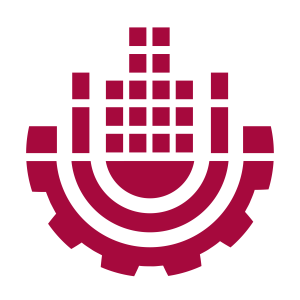Smart Building & Industry
More efficient, responsive and secure buildings and industrial sites drive IoT Adoption
EY estimates that commercial buildings assets globally account for 30% to 40% of energy consumption worldwide and that this level should reach 50% by 2030[1]. At the same time, 30% of energy is wasted in buildings, due to inefficiencies primarily within the mechanical, electrical and plumbing installations[2]. Together building and construction activities account for 39% of all carbon emissions in the world [3], with operational emissions (from energy used for heating, cooling and lighting buildings) accounting for 28%. In a report published in 2015[4], Ericsson Research estimated that ICT, and IoT mainly, could help to reduce GHG emissions by 12% in 2030 in a high reduction potential scenario (about 8 Gt CO2e)[5]. Smart building is one of the first two sectors identified as likely to generate the largest improvements in the short term.
More recently, a study[6] published in 2018 by the US Environmental Protection Agency (EPA) highlighted that indoor air is 100 times more contaminated than outside air and that modern populations spend 80% to 90% of their time indoors, making indoor air more impactful on human health than outdoor air. The same study demonstrated that, contrary to atmospheric pollution, indoor pollutants are about 1,000 times more likely to be inhaled and thus transmitted to the lungs, causing diseases. The COVID-19 pandemics is further revealing the central role played by air quality management in buildings as one of the key factors in the fight against the spread of the virus.
IoT turns out to be extremely powerful to assist building managers, facilities managers, industry operators and supervisors as well as operations managers to better understand how their property, factory, site or supply chain is being used, is operating and is behaving on a daily basis. Insights on equipment performances, global water and energy consumption and resources availability can help to make the most of their assets and to protect occupants and staff in a safe, secure and comfortable working environment.
IoT offer multiple benefits for smart building and smart industry, from operational efficiencies to cost savings and productivity improvement, but its major contribution is certainly the decisive improvement of sustainability, the significant reduction of greenhouse gas emission and the quick lightening of the environmental footprint. IoT brings unprecedented ability to gather data from various sources and to leverage them into strategic decisions that will have immediate business and operational impact, but that will also shape our common practices and future. Smart building and smart industries start with the smart decision of widely adopting IoT.
[5] https://download.atlantis-press.com/article/25836149.pdf
[6] United States Environmental Protection Agency, Managing air quality – air pollutant types, October 2018,
What can IoT do for Smart Building & Industry?
IoT solutions can help to imagine, design, deploy and operate intelligent applications to provide real-time insights on activity and environment to deliver better actionable data for appropriate decision-making. This thus remove manuals tasks, improve efficiency, automate measures, generate alerts and streamline operations, at scale.
Building & Real Estate

IoT Solutions increasingly help facilities management companies, real estate owners and tenants to improve services delivered to occupants, workers, users, students, patients or visitors. Dramatic breakthroughs in IoT sensors and Smart Building Management Systems (SBMS) now enable to monitor, control, orchestrate and manage multiple equipment thanks to a wide array of operational and contextual data collected in real-time in buildings. Occupancy Monitoring can be combined with Air Quality & Ambiance Monitoring and Cleanliness and Operations to ensure safe and optimal working conditions. Energy Management and Water Management help to improve buildings sustainability, reduce their greenhouse footprint and reduce costs to improve the bottom line. Predictive maintenance car be widely deployed with Asset Management & Maintenance, while Security Management directly benefit from increasing automation and real-time detection and monitoring, powered by IoT. Visitor & User Satisfaction can finally be usefully monitored to collect instant feedback to improve services and adapt operations and processes, to make buildings even smarter.
Industry & Manufacturing
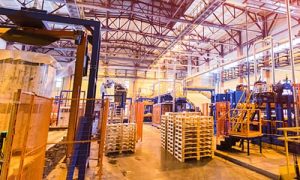
Industrial IoT (IIoT) illustrates the increasing penetration of connected IoT sensors, devices and actuators in the industry and covers a wide variety of use cases that do not all require low latency and high bandwidth but that are however equally important in the production chain. On a Production Site, IoT help to track tools and light equipment, meter energy, gauge fluids levels, measuring pressures, make inventories, monitor waste levels, track pallets / rolls / cases, count workers, test air quality and manage heating ventilation and cooling systems…. Extractions Sites, on their side, can use IoT to enable 24/7 infrastructures control, improve predictive maintenance, increase productivity, supervise energy distribution and consumption, increase worker protection, while monitoring their environmental footprint. Construction Sites are facing workers protection and predictive maintenance challenges too, while having specific needs for proactive materials inventory and ordering management, light equipment and tools tracking, constructions structural health analysis and site mapping for increased efficiency. For all, Worker Protection is a key concern where connected wearables and personal protective equipment or lone worker individual tracker with panic button are delivering real value. All these industries are facing increasing regulation and pressure to quickly reduce their carbon footprint and greenhouse gas emission, in a context of global warming: they can leverage IoT to improve Industrial Site Environment Footprint.
Goods & Assets Monitoring & Tracking
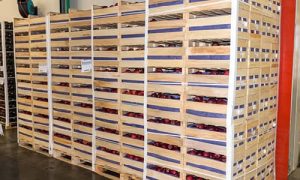
During transit, the lack of visibility and traceability into the condition and location of food, goods and valuable assets is a key stake for freight owners and transporters. Loss, theft, damage or break in the cold chain may have direct impacts on revenue, end-customer satisfaction or, worse, customers’ health and company’s reputation. Goods Monitoring & Tracking enabled by IoT, is key to ensure the best product quality, to grant the required traceability on transport conditions and to resort to appropriate tools to track and trace shipments in case something goes wrong. The same way, asset-intensive industries need to avoid unplanned downtime or failure that might lead to low plant velocity and throughput. With Assets Monitoring &Tracking, they can grant the constant availability of machines, expensive mobile equipment and storage-transport-handling elements to optimize asset workability, increase production throughput and return on investment. Finally, Assets Inventory can use IoT solutions to get instant and detailed inventory and location of materials, tools, critical or leased equipment and to enable owners to be alerted in case they leave their authorized area of use and to track them.
How Kerlink can power Smart Building & Smart Industry IoT Use Cases?
Comprehensive IoT Connectivity Portfolio
Since January 2014, when the company launched the world’s first carrier-grade outdoor LoRaWAN gateway, Kerlink has been the leading provider of industrial-grade IoT connectivity solutions, powered by LoRaWAN technology.
Trusted by large mobile networks operators, leading IoT new entrants and private businesses, Kerlink delivers:
- best-in-class carrier-grade LoRaWAN outdoor gateways, industrial-grade LoRaWAN indoor gateways,
- best-of-breed LoRa Network Server and cutting-edge IoT Network Operation & Management tools, with real-time, powerful and easy-to-use monitoring tools to ensure optimized coverage, maximum IoT network uptime and IoT connectivity lasting performance.
- and value-added IoT applications like native network-based and GPS-free Geolocation, to track and locate all IoT sensors, devices and tags connected to the LoRaWAN network (using triangulation, called Time Differential on Arrival – TDoA), and IoT Device Management, to remotely set-up, configure and monitor remote sensors and devices to ensure optimized connection to the network and grant maximum availability.
“Kerlink is a leader in the global LoRa infrastructure market because of its end-to-end IoT platform that includes geolocation, device management, network operations, vertical solutions and professional services that are accelerating IoT adoption worldwide.”
Mareca Hatler, Director of Research of ON World
Best-in-class and Secure by Design Industrial-Grade Solutions
Kerlink R&D is mastering hardware development and embedded software design to create industrial-grade LoRaWAN gateways built on high-capacity systems, robust and long-term design elements, enhanced radio performance and interference mitigation. This carrier-grade robust design ensures the best radio performance and the best energy efficiency and reliability, even in building and industrial harsh environment.
“The efficiency, safety and security applications that the Internet of Things offers will change how our cities and businesses operate. We can put sensors on vehicles and equipment so we know where they are and how they’re being used. Companies can track assets far from their warehouses and sensors installed in parks, refuse bins and other municipal assets will help our councils improve the efficiency of routine maintenance. Kerlink LoRaWAN gateways are helping Spark deliver these services with high reliability and strong performance, while also providing geolocation-ready design and enabling a wide array of concrete, value-added applications.”
Michael Stribling, GM IoT Solutions of Spark
Kerlink also offers a unique heightened built-in level of security for its indoor and outdoor IoT gateways, granting unrivalled native security by design for IoT networks and infrastructure. Delivering first-class performance, robustness, scalability and simplicity of use, Kerlink best LoRaWAN IoT Solutions are designed to cost-efficiently power private and shared IoT networks for smart building and smart industry use cases. Kerlink’s best performance LoRaWAN gateways are perfectly designed to connect IoT sensors and devices in wide industrial areas or complex building structures and to offer the best value for money and total cost of ownership (TCO), over time.
Kerlink is also constantly improving its efficiency, operations control, and processes through its Quality Program and is ISO 9001-2015 certified since mid-2016 for its “design, development, and sales process of network solutions for the Internet of Things”.
Outstanding Customer Support
Kerlink is recognized for the quality of its expert technical and customer support team. Having geo-relevant, flexible and scalable field operations and support, Kerlink has invested heavily on personnel, systems and training to ensure its customers are supported throughout their IoT journeys. From IoT gateways customer-specific prestaging, frontline support desk, project management, expert and tailored professional services to customer success management, Kerlink cares about its customers’ journey to deliver the best overall customer experience.
Open Interfaces and Strong Ecosystem of Partners
Kerink is a founding and board member of the LoRa Alliance since 2015. Kerlink crystalizes a strong ecosystem of LoRaWAN partners to integrate its best-in-class IoT connectivity building blocks with innovative IoT sensors and devices and smart vertical IoT applications, to deliver end-to-end IoT solutions. Because one size does not fit all and that each project is unique, Kerlink capitalizes on API-first design, open interfaces and standard protocols to ease the integration with partners and deliver customized IoT solutions. IoT connectivity is not a commodity and remains the spine of any IoT solution. Communication is everything!
Why is LoRaWAN relevant for Smart Building & Smart Industry?
LoRaWAN Low Power Wide Area Networks (LPWANs) using LoRa communication can help facility managers and industry operators & supervisors to better monitor, control and manage every aspect of their activity. They can monitor electricity and water consumption to improve overall energy efficiency. They can control assets to improve predictive maintenance, availability and uptime, and track goods and materials to improve supply chain and logistics. They can ensure safe and clean working and visiting conditions for users and staff and streamline operations to cut costs and increase end user satisfaction. LoRaWAN communication delivers the appropriate combination of key capabilities to ensure reliable, cost-efficient and futureproof connectivity to power smart building and smart industry use cases. Learn why.
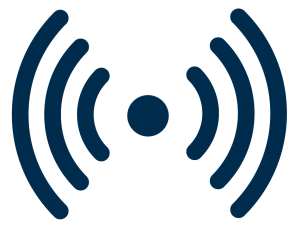
Long-Range Communication
Connectivity has always been an issue for wide commercial and industrial areas, mainly due to the lack of / poor indoor coverage proposed by mobile network operators and the expensive price of their cellular subscriptions. LoRaWAN technology now offers long-range communication (up to 25 km) to connect distant outdoor IoT sensors, on wide industrial sites, and flexible network design to ensure optimized and tailored coverage, in all types of natural environments. This is the best IoT connectivity for many industrial use cases.

Low Power Consumption
LoRaWAN technology has been specifically designed and optimized to reduce the power consumption of IoT sensors and extend their battery lifetime up to 15+ years, making LoRaWAN-enabled IoT sensors able to work between 5 and 10 times longer than sensors using traditional cellular networks. The extended lifespan of sensors, tags and trackers used on the field increase peace of mind for operations and improve visibility on the return on investment (ROI).
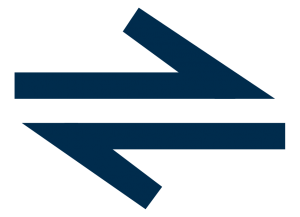
Bi-directional communication
LoRaWAN protocol enable fully bidirectional communications to collect data from deployed IoT sensors, but also to send messages to the equipment used on the field. This can be particularly useful to remotely control and manage assets like energy meters, lights, heating, ventilation or air conditioning systems, occupancy sensors, soap dispensers, or survey devices, to name few examples.

Native geolocation
LoRaWAN technology offers native geolocation to locate IoT sensors, trackers and tags connected to the network. This network-based solution is using triangulation (called Time Differential on Arrival or TDoA), a GPS-free geolocation technology that does not require additional power nor additional costly hardware component, and does not increase energy consumption of located devices. Thus, any LoRa-enabled device connected to the network, whatever its type, can be located and tracked. For indoor location, LoRaWAN can also be combined with Bluetooth Low Energy (BLE) or Wi-Fi to improve accuracy.
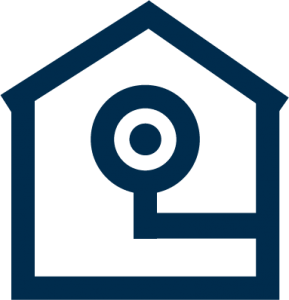
Deep indoor coverage
LoRaWAN IoT Communication delivers deep indoor penetration, enabling robust IoT connectivity to reach sensors and devices in remote indoor or underground locations on industrial sites or within buildings, without consuming extra power. This is especially relevant to connect factories and warehouses and equipment located on buildings floors, basement or underground shelters, like valves, meters, HVAC or energy production systems.
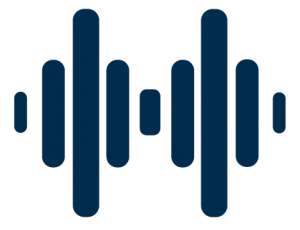
Free Unlicensed Frequencies
LoraWAN protocol operates on license-free and cost-free ISM (Industrial, Scientific, Medical) spectrum – EU 868 MHz, AS 923 MHz, US 915 MHz – allowing any facility manager, industrial site supervisor or supply chain manager to quickly and flexibly deploy and operate private or shared IoT networks without acquiring a license from the regulator or paying fees to use a license. This considerably simplifies the access to this IoT connectivity and reduces initial investment and operating expenses, thus enabling the available capital to be invested in building equipment and industrial assets.
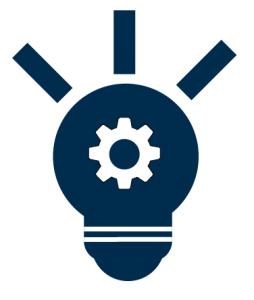
Open Standard and Growing Ecosystem
LoRaWAN technology leverages an open protocol approach, led by the LoRa Alliance which federates the specification, development and deployment of this standard, elaborates certification guides, and ensures interoperability between all IoT connectivity and IoT sensors providers. This grants futureproof IoT solutions, with no vendor lock-in, a seamless and quick deployment, and the ideal scalability and versatility to connect various cost-efficient smart building and smart industry use cases.
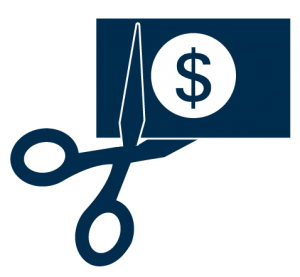
Cost-Efficiency
LoRaWAN communication offers the lowest cost for IoT network infrastructure deployment and maintenance over time, thanks to its long range, redundancy, scalability and versatility. IoT connectivity usage is also very cost-efficient as it does not require any license fees. A LoRaWAN LPWAN (low power wide area network) is ten times less expensive than a cellular network. This leads to streamlined real estate facility management and industrial infrastructures capital expenditure (Capex) and operational expenses (Opex) and allows facility managers and industrial supervisors to concentrate investment on building equipment and industrial assets.

High Security
LoRaWAN protocol is using 128-bits Advances Encryption Standard (AES) algorithms to ensure end-to-end high encryption with two combined layers: one for the IoT network provider – to ensure the mutual authentication between a LoRaWAN-enabled IoT sensor and the LoRaWAN IoT network used – and another for the user – to ensure that the IoT network provider does not have access to the end user’s collected data and application -. LoRaWAN technology is one of the few wireless technologies to implement end-to-end robust encryption for data (called payloads) exchanged between the IoT sensors and IoT applications servers. This grants future-proof security and confidentiality of bi-directional data exchanges for smart building and smart industry IoT applications.
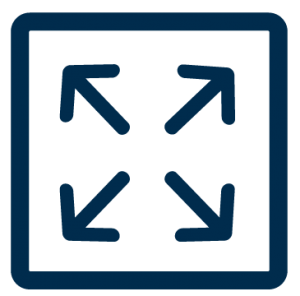
High Scalability and Capicity
LoRaWAN technology enables high scalability and capacity networks to support thousands of connected IoT sensors and devices and transmit millions of messages, making it the ideal choice for long range / indoor and low power deployments in buildings and industries. LoRa LPWAN (low power wide area network) high capacity and multi-usage capabilities can support high device capacity on a single IoT network. Industrial-grade and carrier-grade IoT connectivity solutions, powered by LoRaWAN protocol, offer performant, robust and reliable connectivity for private or shared networks to grant a unified and scalable multipurpose infrastructure, to efficiently serve smart building and smart industry IoT use cases.



